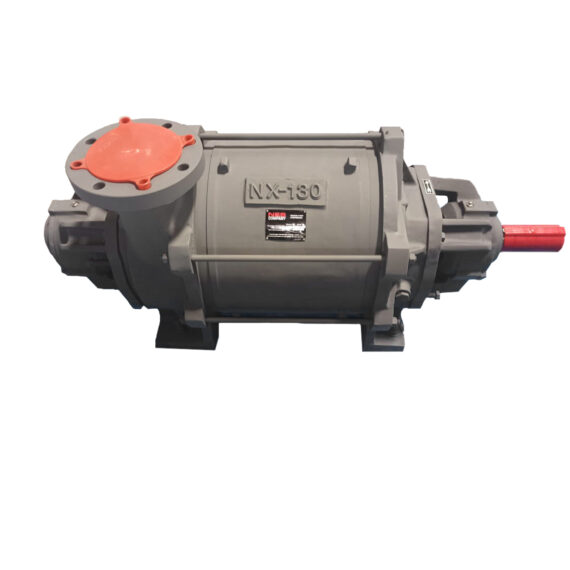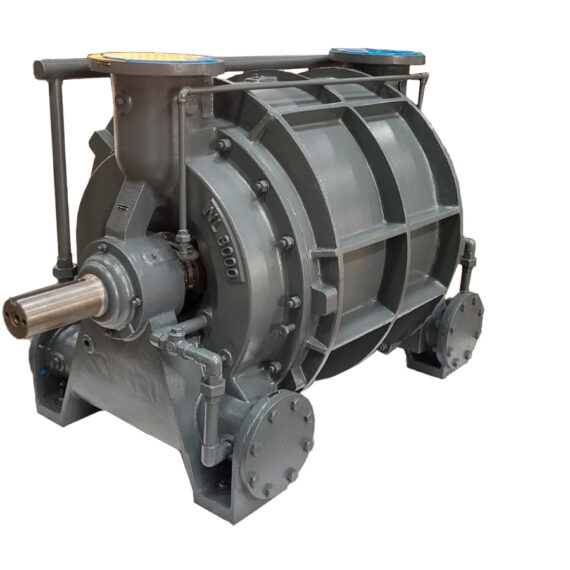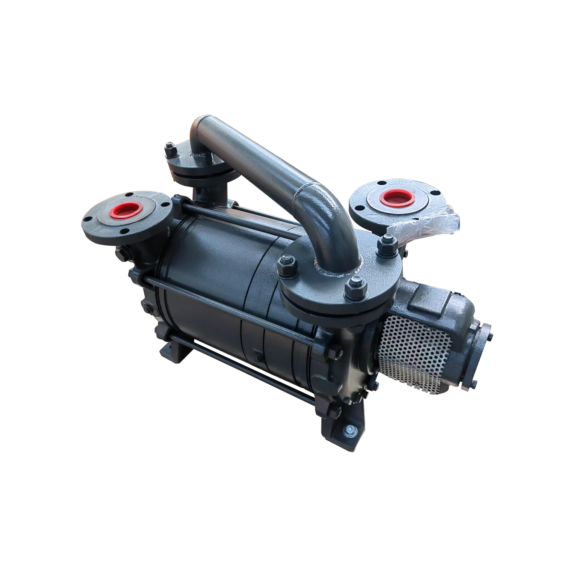
Liquid Ring Vacuum Pump & Compressors for Military Defense
The defense industry requires an enormous amount of steel to be able to construct everything from marine vessels to tanks. Military-grade steel has numerous specific requirements pertaining to quality and structural integrity. As such is the case, the steel needs to undergo various treatment processes in order to qualify for the standards and requirements necessary for military manufacturing.
The liquid ring vacuum pump is applicable to vacuum metallizing because of the liquid nature of the metallizing agent. Molten metal is atomized and sprayed onto a workpiece to improve its look or mechanical properties towards its intended use, and many harmful vapors and molten metal can enter the pump that is evacuating the chamber. If molten metal is to solidify within any typical pump, it will cause failure, clogging it or breaking it. This is not so with the liquid ring vacuum pump. This pump is a wet-running pump that is able to pass molten metallizing agents, toxic vapors, and atomized solid metals with no issue. Included in this mixture of potentially harmful discharge is that occasionally, combustible gasses are used to atomize the metallizing agent. Thus, this combustible vapor will be passing through the pump as well. The liquid ring vacuum pump already boasts near isothermal compression to handle the potentially explosive gasses gently, but using proper metallurgy for an explosion-proof rated pump, a large explosion can be completely avoided.
The initial step of the vacuum brazing process is the pump-down of the chamber which evaporates any water that remains adsorbed in the metal parts. This adsorption occurs when metal is exposed to any water, whether it be moist air or a cleaning step. A water layer measuring a few nanometers is able to adhere to the metal through adsorption and its coherent properties. Water vapor emulsifies with the oil lubrication that is common in so many different pumps as they are in operation. This emulsion is a slurry, which hinders performance at best and causes failure at worst. The liquid ring vacuum pump condenses these vapors within its liquid ring, causing no problem as it enters and swiftly sees its way out into a discharge separator. Depending on the temperature of brazing and the metals that require joining, various other materials may be used as fluxing agents. These include powders, pastes, and gels that can contain ceramic, graphite, aluminum, titanium, silver, or halogen salt compounds. Some of these can very obviously be bad to breathe in, and thus the process requires a constant suction that cannot let any of these vapors out if they are to form by chance. This constant suction is another property of the liquid ring vacuum pump that makes it a great option for vacuum brazing.
Vacuum annealing is done in a chamber where atmospheric air is removed by vacuum. However, if that is only the case, then atmospheric air will enter and there is no point in having a vacuum. To counter this, bright-annealing is done so that inert gasses are inserted. Whether it be water vapor, ammonia, nitrogen, or hydrogen, the process works as long as there is no significant oxygen. In the case of water vapor, however, a wet-running pump like the liquid ring vacuum pump is absolutely needed. Not only is it needed, however, but it increases in mass transfer rate with more condensable vapors. This is because all condensable vapors condense into the liquid ring, which absorbs the heat of condensation. This leaves empty space where the vapor previously occupied, which only draws in more vapor and atmospheric air.
View our Products
Applications of Liquid Ring Vacuum Pumps
The liquid ring vacuum pump is applicable to vacuum metallizing because of the liquid nature of the metallizing agent. Molten metal is atomized and sprayed onto a workpiece to improve its look or mechanical properties towards its intended use, and many harmful vapors and molten metal can enter the pump that is evacuating the chamber. If molten metal is to solidify within any typical pump, it will cause failure, clogging it or breaking it. This is not so with the liquid ring vacuum pump. This pump is a wet-running pump that is able to pass molten metallizing agents, toxic vapors, and atomized solid metals with no issue. Included in this mixture of potentially harmful discharge is that occasionally, combustible gasses are used to atomize the metallizing agent. Thus, this combustible vapor will be passing through the pump as well. The liquid ring vacuum pump already boasts near isothermal compression to handle the potentially explosive gasses gently, but using proper metallurgy for an explosion-proof rated pump, a large explosion can be completely avoided.
The initial step of the vacuum brazing process is the pump-down of the chamber which evaporates any water that remains adsorbed in the metal parts. This adsorption occurs when metal is exposed to any water, whether it be moist air or a cleaning step. A water layer measuring a few nanometers is able to adhere to the metal through adsorption and its coherent properties. Water vapor emulsifies with the oil lubrication that is common in so many different pumps as they are in operation. This emulsion is a slurry, which hinders performance at best and causes failure at worst. The liquid ring vacuum pump condenses these vapors within its liquid ring, causing no problem as it enters and swiftly sees its way out into a discharge separator. Depending on the temperature of brazing and the metals that require joining, various other materials may be used as fluxing agents. These include powders, pastes, and gels that can contain ceramic, graphite, aluminum, titanium, silver, or halogen salt compounds. Some of these can very obviously be bad to breathe in, and thus the process requires a constant suction that cannot let any of these vapors out if they are to form by chance. This constant suction is another property of the liquid ring vacuum pump that makes it a great option for vacuum brazing.
Vacuum annealing is done in a chamber where atmospheric air is removed by vacuum. However, if that is only the case, then atmospheric air will enter and there is no point in having a vacuum. To counter this, bright-annealing is done so that inert gasses are inserted. Whether it be water vapor, ammonia, nitrogen, or hydrogen, the process works as long as there is no significant oxygen. In the case of water vapor, however, a wet-running pump like the liquid ring vacuum pump is absolutely needed. Not only is it needed, however, but it increases in mass transfer rate with more condensable vapors. This is because all condensable vapors condense into the liquid ring, which absorbs the heat of condensation. This leaves empty space where the vapor previously occupied, which only draws in more vapor and atmospheric air.



